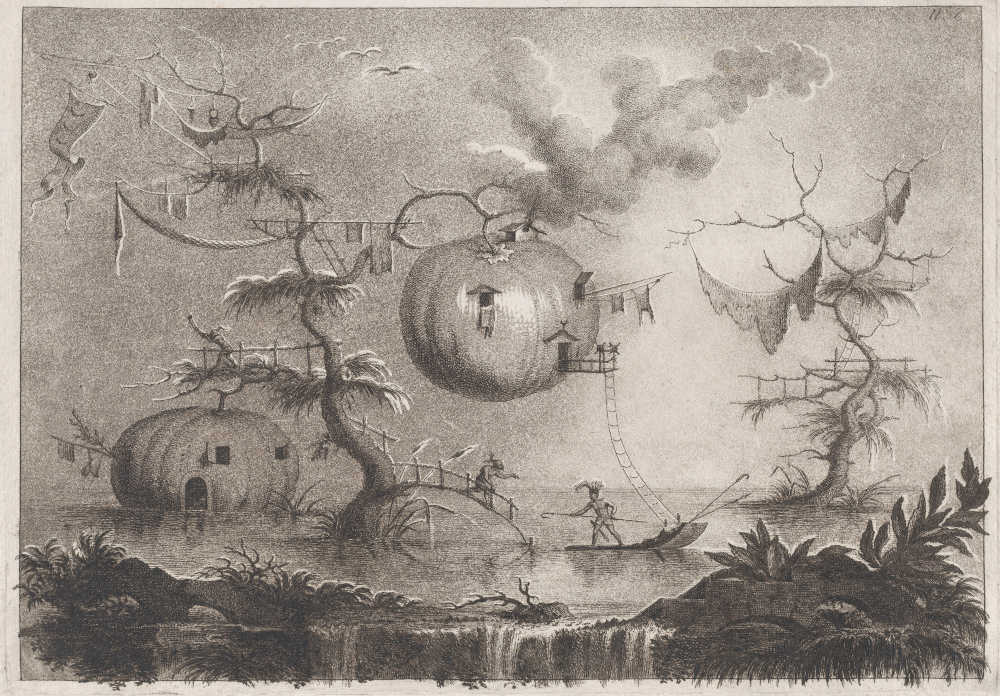Only one castrato made solo recordings — Alessandro Moreschi performed for the Gramophone & Typewriter Company in 1902 and 1904, when he was in his mid-40s. For 30 years he had sung as first soprano in the Sistine Chapel Choir, but in 1903 Pius X ordered that the remaining castrati be replaced by boys. He died in 1922 and lies in Rome.
Art
Eye Music
The scores of George Crumb’s Makrokosmos piano suite take unusual forms: a circle, a cross, a spiral, a peace sign.
Each is handwritten.
The Endless House
In 1924 architect Frederick Kiesler proposed a house fashioned as a continuous shell rather than an assembly of columns and beams:
The house is not a dome, but an enclosure which rises along the floor uninterrupted into walls and ceilings. Thus the safety of the house does not depend on underground footings but on a strict coordination of all enclosures of the house into one structural unit. Even the window areas are not standardized in size or shape, but are, rather, large and varied in their transparency and translucency, and form part of the continuous flow of the shell.
Storage space is provided between double shells in the walls, radiant heating is built into the floor, and there are no separate bathrooms, as bathing is done in the individual living quarters.
“While the concept of the house does not advocate a ‘return to nature’, it certainly does encourage a more natural way of living, and a greater independence from our constantly increasing automative way of life.”
(Via Ulrich Conrads, The Architecture of Fantasy: Utopian Building and Planning in Modern Times, 1962.)
Rock Music
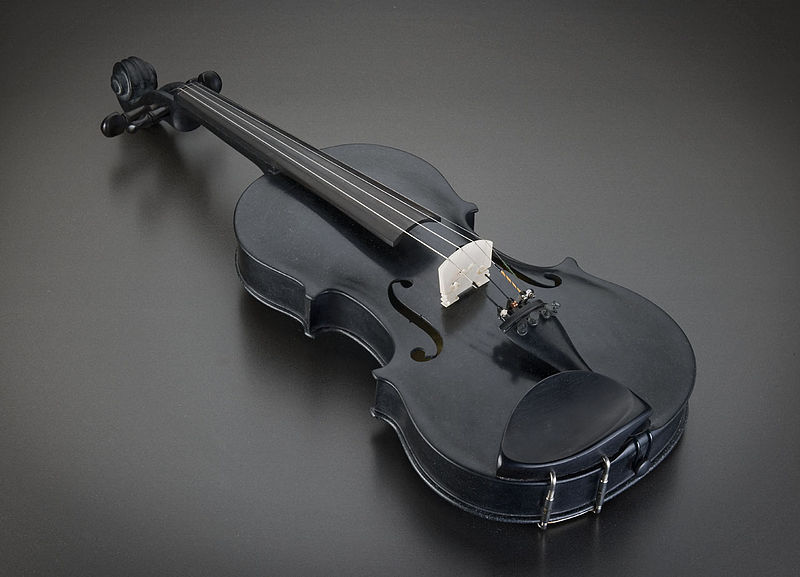
The Blackbird is a full-size playable stone violin crafted by Swedish sculptor Lars Widenfalk. The instrument incorporates diabase from his grandfather’s tombstone, with a backplate of porphyritic diabase, both materials more than a billion years old. The design is based on drawings by Stradivarius, but Widenfalk made some modifications to allow it to be played.
The fingerboard, pegs, tailpiece, and chinrest are of black ebony, and the bridge is of mammoth ivory. “What drove me on was the desire to discover the limits to which this stone can be pushed as an artistic material,” Widenfalk said. “At two kilos it is heavier than wooden violins, but it gives you the feel that you are carrying Mother Earth.”
Astrobiology
In 1776, draftsman Filippo Morghen produced a set of 10 etchings with a startling title: The Suite of the Most Notable Things Seen by Cavaliere Wild Scull, and by Signore de la Hire on Their Famous Voyage From the Earth to the Moon.
Philippe de La Hire was a real French astronomer; nothing is known of Scull, and in the second printing Morghen replaced him with natural philosopher Bishop John Wilkins as a putative source of his fantastic images.
As to life on the moon, it’s pretty wild — among other things, the lunar inhabitants live in pumpkins to protect themselves from wild beasts. You can see the whole series at Public Domain Review.
Beholder
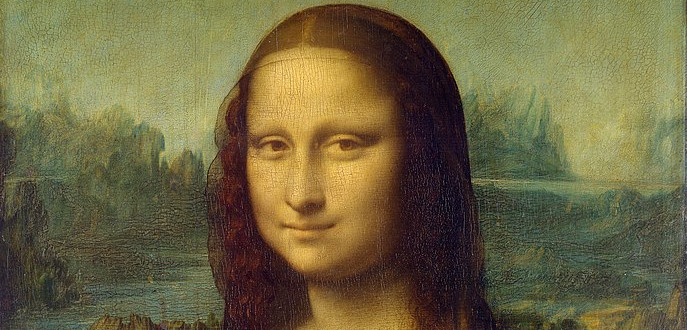
“In a lecture on ‘Beauty and Morality,’ at the University of London, one Kane S. Smith called the ‘Mona Lisa’ of Leonardo da Vinci ‘one of the most actively evil pictures ever painted, the embodiment of all evil the painter could imagine put into the most attractive form he could devise.'”
Literary Digest, Jan. 3, 1914:
“The lecturer admitted that it was an exquisite piece of painting, but said, ‘if you look at it long enough to get into its atmosphere, I think you will be glad to escape from its influence. It has an atmosphere of indefinable evil.'”
“The audience is stated to have applauded enthusiastically, but it is probable they would have applauded equally as heartily if the lecturer had found the influences of the picture good.”
Getting There
https://www.youtube.com/watch?v=IPI4JiO3-z0
Designed by architects in Amsterdam and Beijing, the Lucky Knot Bridge in Changsha, China, combines three bridges in one. Inspired by both the Möbius strip and the Chinese knotting art, the 185-meter pedestrian bridge spans Dragon King Harbor River, connecting multiple levels at varying heights (the river banks, the road, and a park at a higher level) while permitting pedestrians to pass from one route to another using “moon gates.”
“Bridges … have a highly metaphorical quality,” Michel Schreinemachers, a partner at Next Architects, told Wired. “They connect not only in a physical sense, but also people, places, needs, and experiences.”
Disappearing Act
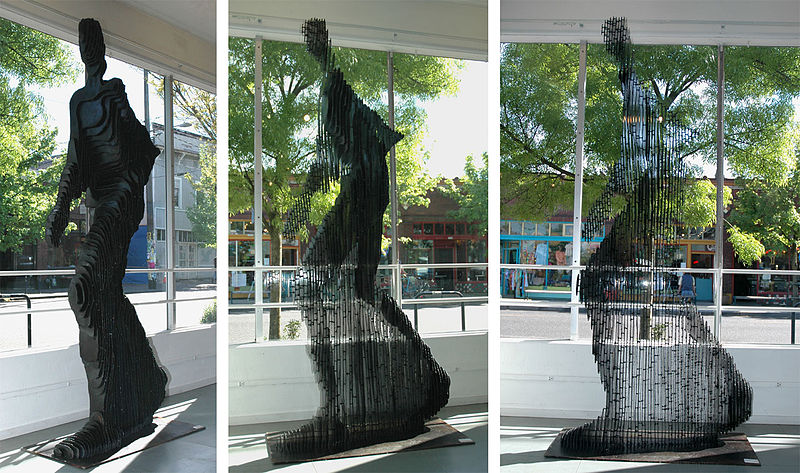
Julian Voss-Andreae studied physics at the University of Vienna before pursuing an art degree in the United States. His sculpture Quantum Man consists of 115 vertical steel sheets spaced by 1,000 short steel rods. The resulting figure looks solid when viewed from the front but almost disappears when viewed from the side, as light passes between the sheets.
“My interest is really nature,” he says. “One way to explore it is through science. Another is through intuitive sense and a search for metaphors.”
(Thanks, Ron.)
Inspiration
Berndnaut Smilde makes clouds. The Dutch artist has devised a way to combine water vapor with smoke to create miniature clouds that hover in enclosed spaces. He’s been deploying it in locations ranging from cathedrals to coal mines.
“I see them as temporary sculptures, made of almost nothing, balancing on the edge of materiality, an image of prospect in an empty space,” he told Rajesh Punj. “For me the work is about the idea of a cloud inside a space and what people project onto it. You can see them as a sign of misfortune or an element from a classical painting. There is something ungraspable about clouds: it might explain why people have been projecting so many meanings and myths upon clouds for centuries.”
Time named the technique one of the 50 best inventions of 2012.
Elbow Room
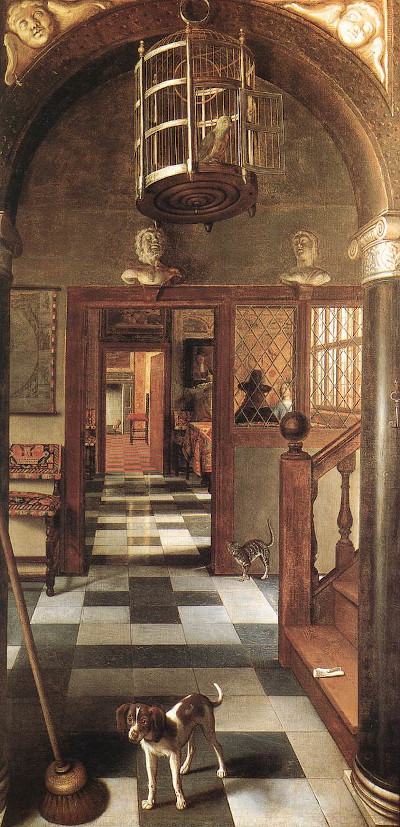
Visiting Thomas Povey in 1663, Samuel Pepys was surprised when his host opened a door to reveal an unsuspected region of the house.
At a second glance he saw that Povey had only opened a closet in which a large deceiving painting had been hung.
The painting, Samuel Dirksz van Hoogstraten’s View of a Corridor, still hangs at Dyrham Park today.

